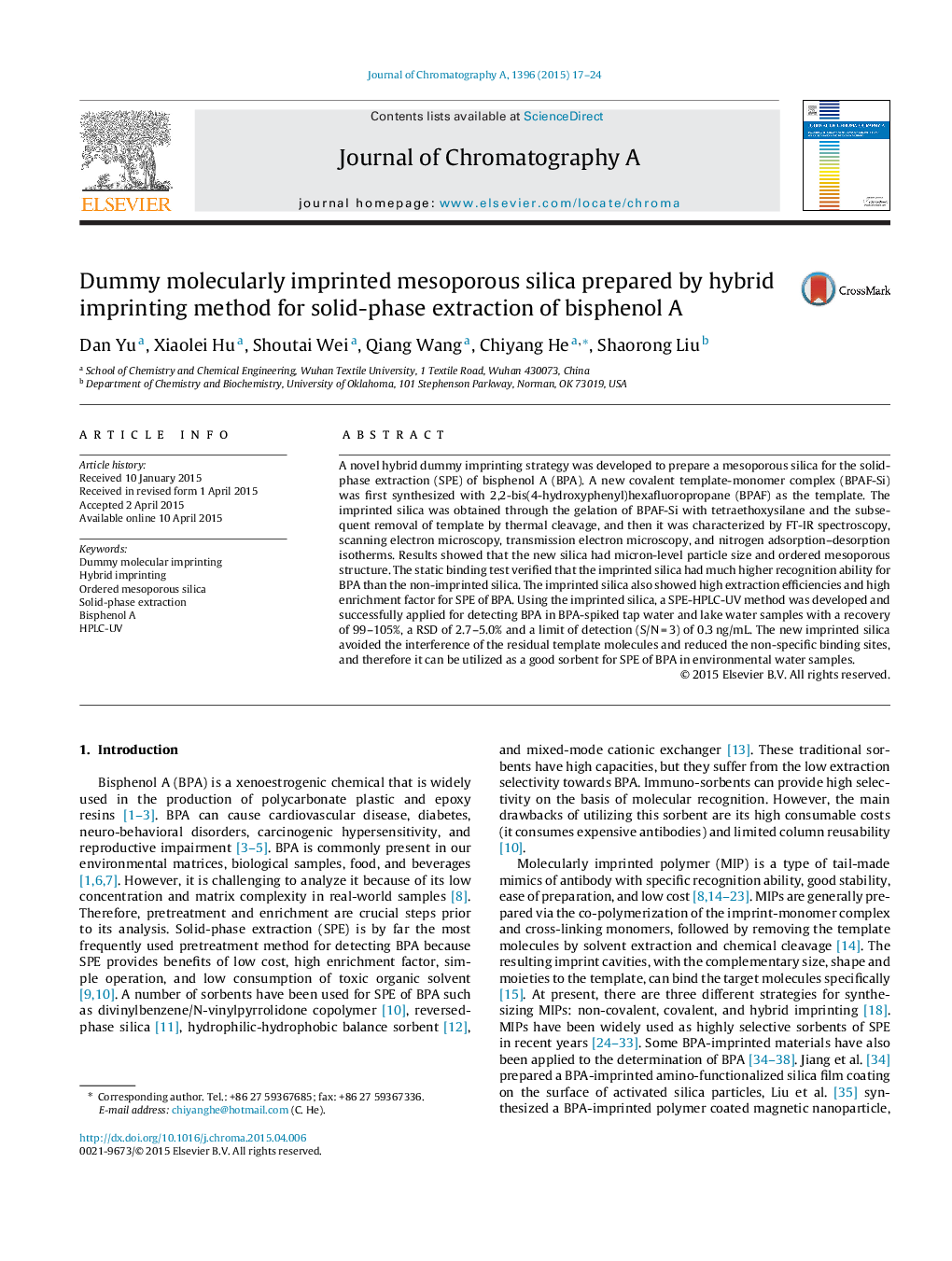| Article ID | Journal | Published Year | Pages | File Type |
|---|---|---|---|---|
| 1199461 | Journal of Chromatography A | 2015 | 8 Pages |
•A novel dummy molecularly imprinted mesoporous silica prepared by a hybrid method.•Completely avoid the interference of residual template molecules.•High extraction efficiency, high enrichment factor and acceptable reusability.•Successfully detect bisphenol A by a new SPE-HPLC-UV method.
A novel hybrid dummy imprinting strategy was developed to prepare a mesoporous silica for the solid-phase extraction (SPE) of bisphenol A (BPA). A new covalent template-monomer complex (BPAF-Si) was first synthesized with 2,2-bis(4-hydroxyphenyl)hexafluoropropane (BPAF) as the template. The imprinted silica was obtained through the gelation of BPAF-Si with tetraethoxysilane and the subsequent removal of template by thermal cleavage, and then it was characterized by FT-IR spectroscopy, scanning electron microscopy, transmission electron microscopy, and nitrogen adsorption–desorption isotherms. Results showed that the new silica had micron-level particle size and ordered mesoporous structure. The static binding test verified that the imprinted silica had much higher recognition ability for BPA than the non-imprinted silica. The imprinted silica also showed high extraction efficiencies and high enrichment factor for SPE of BPA. Using the imprinted silica, a SPE-HPLC-UV method was developed and successfully applied for detecting BPA in BPA-spiked tap water and lake water samples with a recovery of 99–105%, a RSD of 2.7–5.0% and a limit of detection (S/N = 3) of 0.3 ng/mL. The new imprinted silica avoided the interference of the residual template molecules and reduced the non-specific binding sites, and therefore it can be utilized as a good sorbent for SPE of BPA in environmental water samples.
